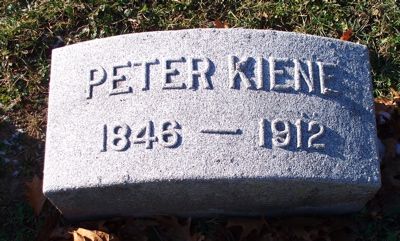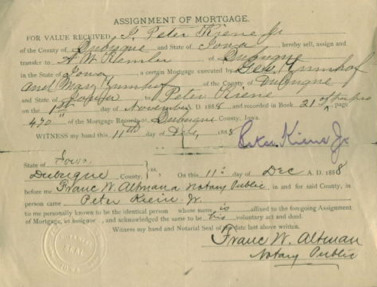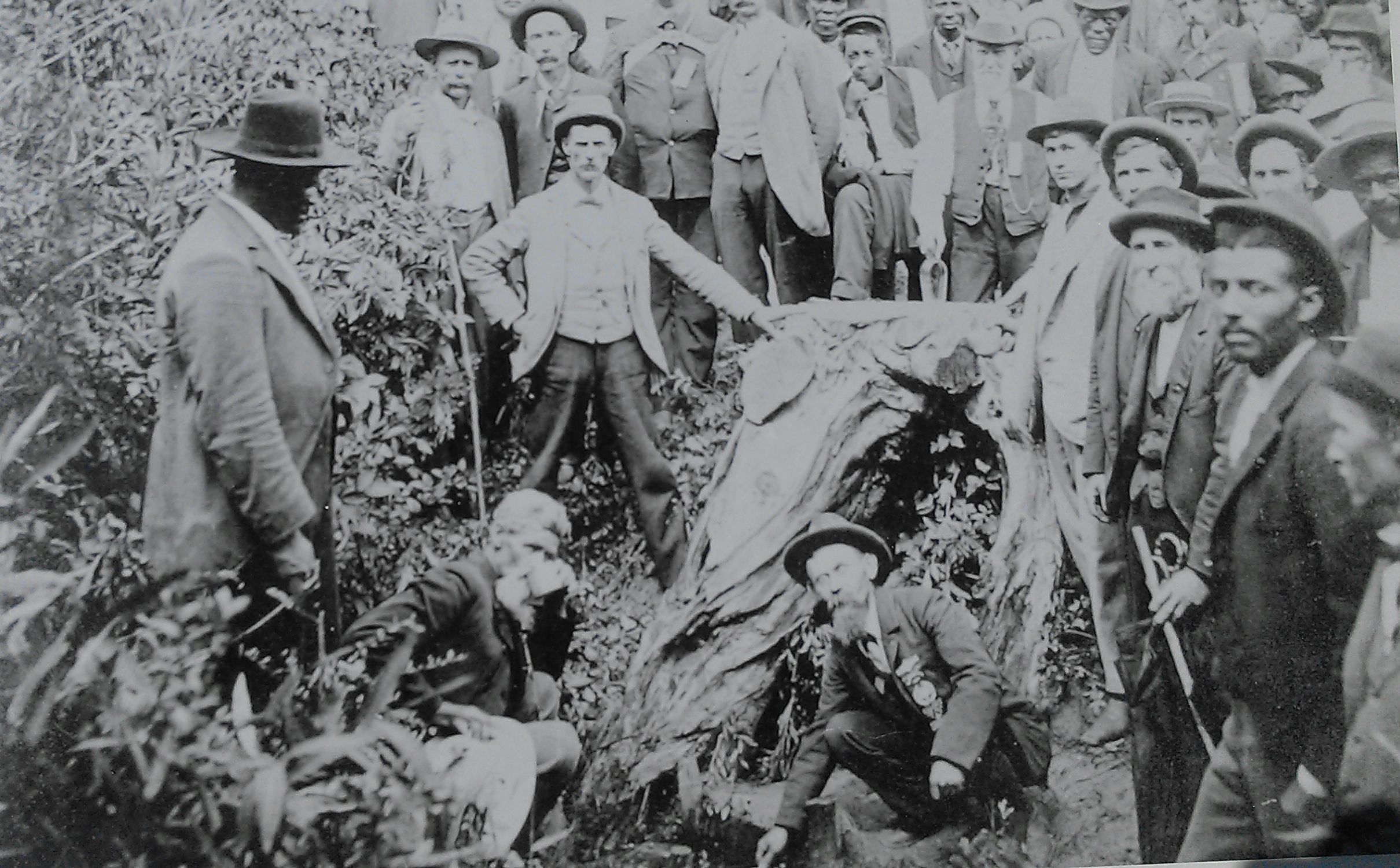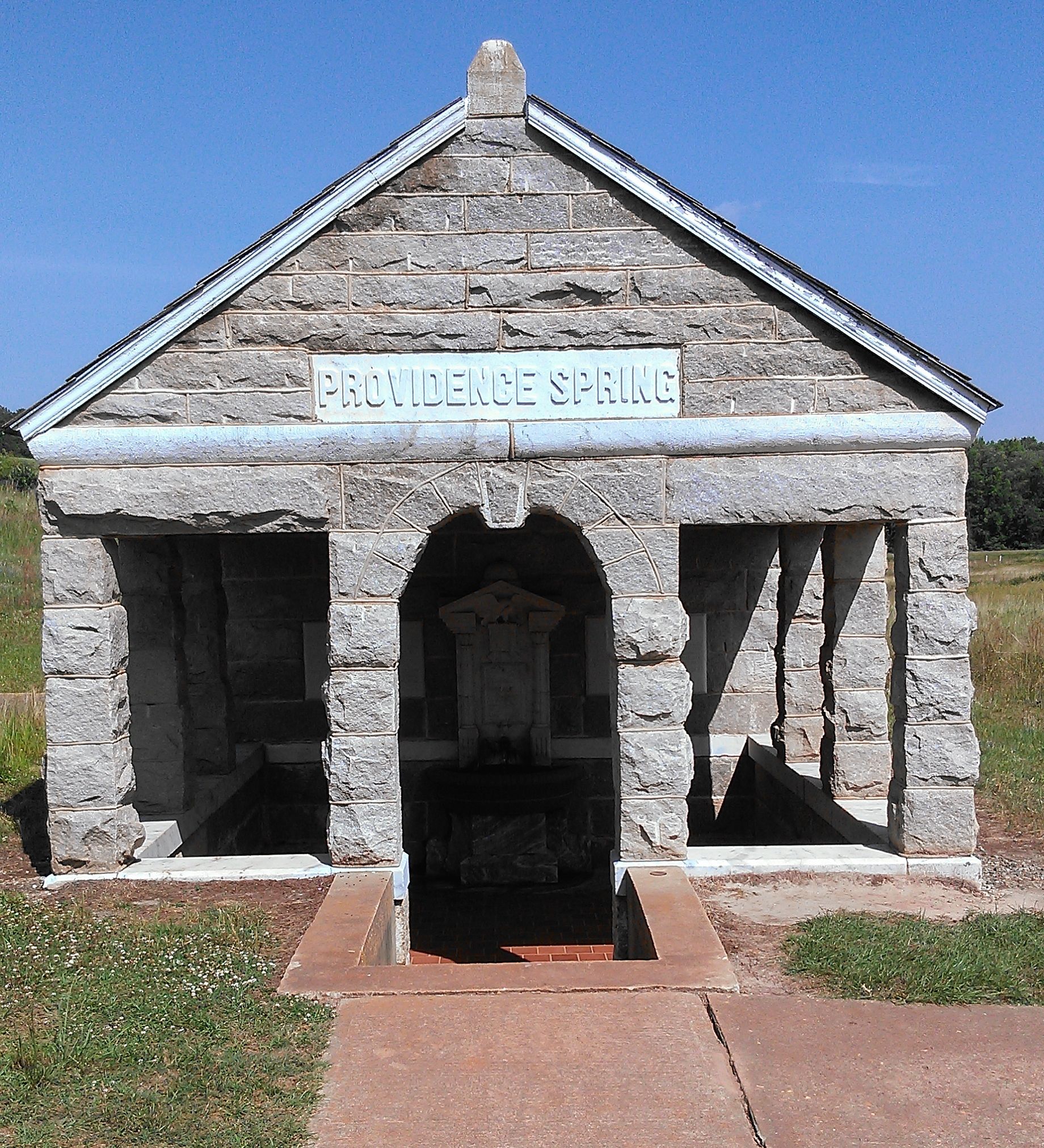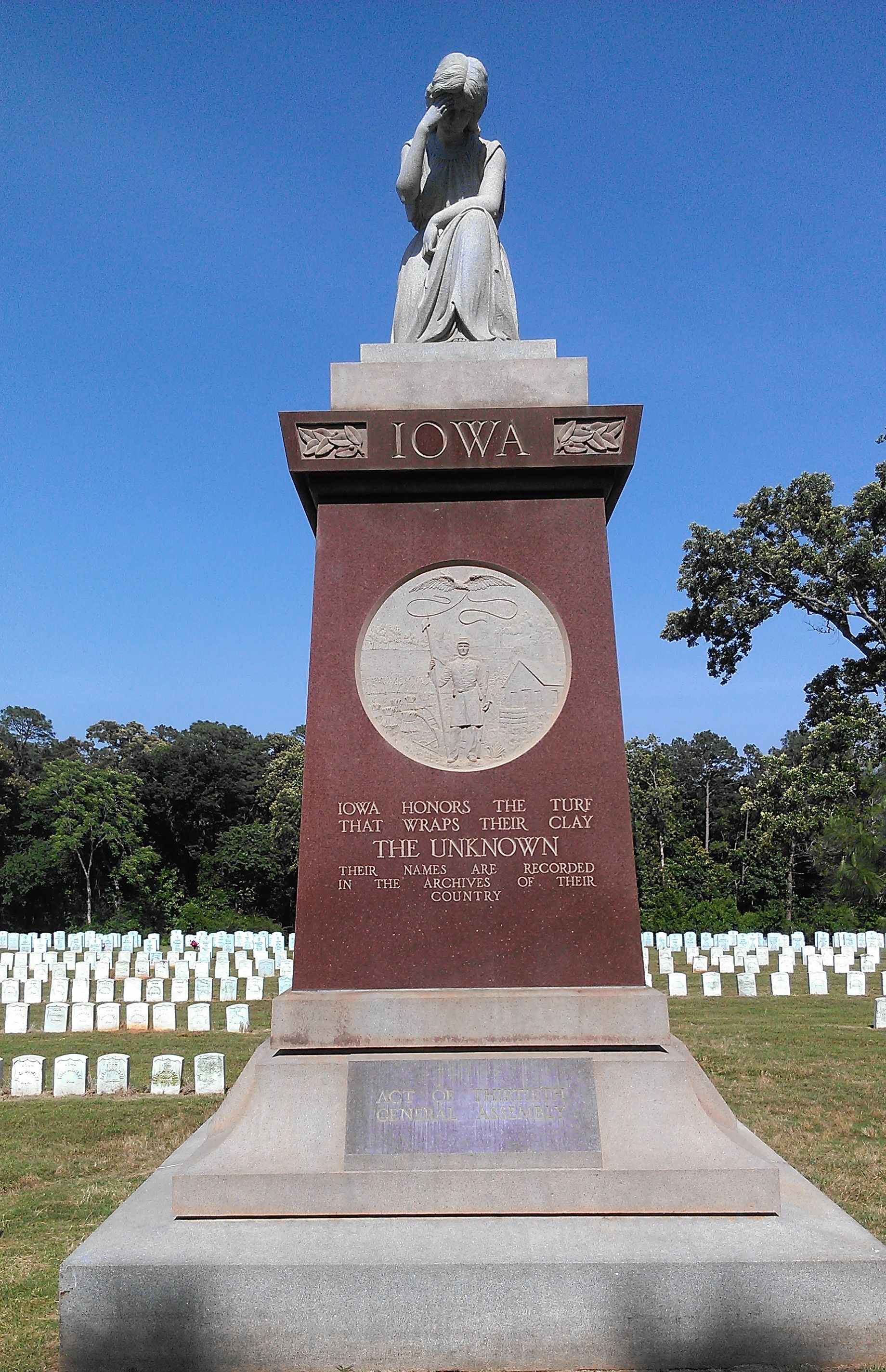Encyclopedia Dubuque
"Encyclopedia Dubuque is the online authority for all things Dubuque, written by the people who know the city best.”
Marshall Cohen—researcher and producer, CNN
Affiliated with the Local History Network of the State Historical Society of Iowa, and the Iowa Museum Association.
KIENE, Peter: Difference between revisions
No edit summary |
No edit summary |
||
| Line 2: | Line 2: | ||
[[Image:kiene1846.jpg|left|thumb|250px|Headstone in Linwood Cemetery]]KIENE, Peter. (Dubuque, IA, Nov. 2, 1846--Dubuque, IA, Dec. 6, 1912). Kiene's [[CIVIL WAR]] experience began at the age of fifteen with his enlistment in the Union Army in Company E, 16th Iowa. Wounded twice, Kiene was captured and imprisoned seven months at the notorious Andersonville prison and later in Libby Prison. | [[Image:kiene1846.jpg|left|thumb|250px|Headstone in Linwood Cemetery]]KIENE, Peter. (Dubuque, IA, Nov. 2, 1846--Dubuque, IA, Dec. 6, 1912). Kiene's [[CIVIL WAR]] experience began at the age of fifteen with his enlistment in the Union Army in Company E, 16th Iowa. Wounded twice, Kiene was captured and imprisoned seven months at the notorious Andersonville prison and later in Libby Prison. | ||
The intervention of his father, [[KIENE, Peter Sr.|Peter KIENE, Sr.]] on behalf of a Confederate soldier held at Rock Island led to his son receiving special attention at a prison known for harsh conditions that | The intervention of his father, [[KIENE, Peter Sr.|Peter KIENE, Sr.]] on behalf of a Confederate soldier held at Rock Island led to his son receiving special attention at a prison known for harsh conditions that caused the death of many Union prisoners. According to the story reported by [[WILKIE, Franc|Franc WILKIE]], a Southern woman visiting the Andersonville camp found that Kiene came from Dubuque which not far from Rock Island where her brother was being held a prisoner of the Union. Peter Kiene, Sr. quickly arranged special treatment for the brother while the sister looked after Kiene. Both men lived. (1) | ||
[[Image:kiene.png|left|thumb|250px|Assignment of mortgage]] | [[Image:kiene.png|left|thumb|250px|Assignment of mortgage]] | ||
[[File:andersonvillea.jpeg|200px|thumb|left|Andersonville prison, officially named Camp Sumter, occupied 26.5 acres enclosed by a double palisade made of pine logs. A railing inside the stockade constituted a "deadline." Guards were ordered to shoot anyone who crossed the deadline. No shelter was furnished; men bought wooden poles for $1.50 and pooled their blankets to make tents. Water came from wells the prisoners dug and from the stockade branch of Sweetwater Creek which ran through the center of the camp. Often latrines bordered the lower end and sewage from the guards' camp, outside the stockade, also emptied into it. Spread by flies and maggots, dysentery and scurvy resulted in a death rate of up to 130 men daily. Photo courtesy: National Park Service, Andersonville National Historic Site, Georgia]] | [[File:andersonvillea.jpeg|200px|thumb|left|Andersonville prison, officially named Camp Sumter, occupied 26.5 acres enclosed by a double palisade made of pine logs. A railing inside the stockade constituted a "deadline." Guards were ordered to shoot anyone who crossed the deadline. No shelter was furnished; men bought wooden poles for $1.50 and pooled their blankets to make tents. Water came from wells the prisoners dug and from the stockade branch of Sweetwater Creek which ran through the center of the camp. Often latrines bordered the lower end and sewage from the guards' camp, outside the stockade, also emptied into it. Spread by flies and maggots, dysentery and scurvy resulted in a death rate of up to 130 men daily. Photo courtesy: National Park Service, Andersonville National Historic Site, Georgia]] | ||
Revision as of 04:52, 29 April 2018
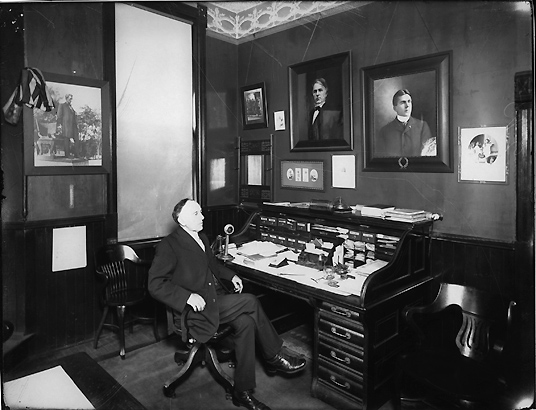
KIENE, Peter. (Dubuque, IA, Nov. 2, 1846--Dubuque, IA, Dec. 6, 1912). Kiene's CIVIL WAR experience began at the age of fifteen with his enlistment in the Union Army in Company E, 16th Iowa. Wounded twice, Kiene was captured and imprisoned seven months at the notorious Andersonville prison and later in Libby Prison.
The intervention of his father, Peter KIENE, Sr. on behalf of a Confederate soldier held at Rock Island led to his son receiving special attention at a prison known for harsh conditions that caused the death of many Union prisoners. According to the story reported by Franc WILKIE, a Southern woman visiting the Andersonville camp found that Kiene came from Dubuque which not far from Rock Island where her brother was being held a prisoner of the Union. Peter Kiene, Sr. quickly arranged special treatment for the brother while the sister looked after Kiene. Both men lived. (1)

After Keine returned to Dubuque, he began secretary of the CHICAGO, DUBUQUE AND MINNESOTA RAILROAD and the CHICAGO, CLINTON AND DUBUQUE RAILROAD. Before joining his father in the business of insurance, real estate and loans, Kiene was also the secretary-treasurer of the DUBUQUE MANUFACTURING COMPANY. (2) He was a director of FIRST NATIONAL BANK OF DUBUQUE, a charter member of the Library Board, member of the board of directors of the DUBUQUE INDUSTRIAL CORPORATION, and president of the school board.
---
Source:
1. "How a 15-Year-Old Dubuquer Survived Andersonville," Telegraph Herald, March 29, 1964, p. 21
2. Ibid.
Oldt, Franklin. History of Dubuque County, Iowa. Chicago: Western Historical Company, 1880, p. 820


